

Riding Tips for Recumbent Tricycles
Published on 01/18/2024
Welcome back to another Utah Trikes article. Almost every day we get people writing in to us asking for tips and tricks on how to make the most out of their trike riding experience. So we thought today we would put together a master list for you of some of our favorite trike riding tips.
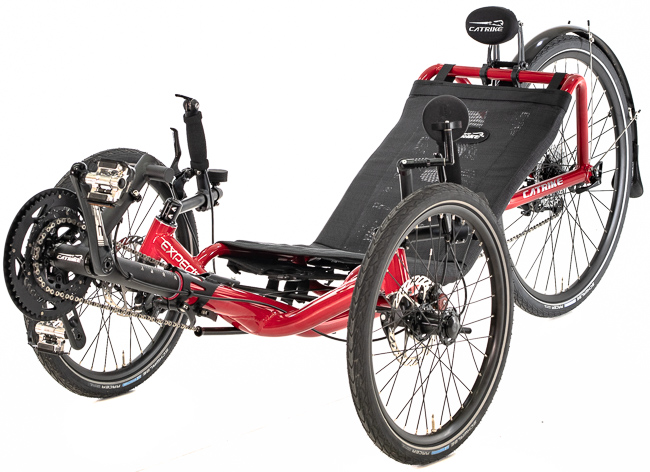
Recumbent tricycles have been rapidly gaining popularity for their unique comfort and exceptional stability. As compared to traditional upright bikes, they offer a reclined seating position, reducing fatigue and making longer rides more enjoyable. This feature has made them a favorite among riding enthusiasts of all ages.
However, riding a recumbent trike entails some skills and understandings distinct from those required to ride a conventional bicycle. This article will share some practical advice to help you acclimate to the unique handling of recumbent tricycles, discuss proper steering techniques, provide tips for an optimal seating posture, and underscore the importance of visibility accessories. But before we proceed, keep in mind that every ride starts with passion. So buckle up and ready yourself for a tricycle journey like no other.
Understanding the Unique Handling of Recumbent Tricycles
When you’re first starting your trike riding journey you’ll notice that recumbent trikes handle a bit different than other types of cycling equipment. There’s some key differences that cause this and in this section we’ll cover some of these differences and some tips on how to deal with them.
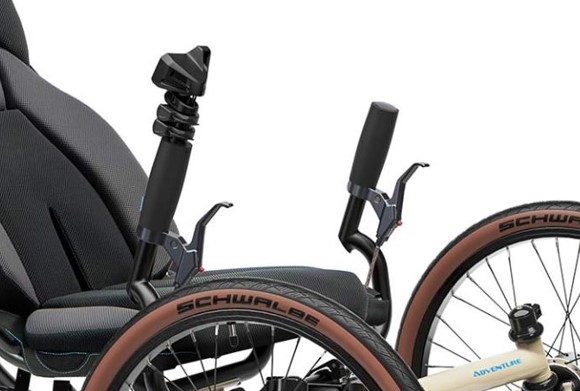
The Design
One of the major differences between recumbent trikes and bikes is their design. Recumbent trikes have a low-slung position with a reclined seat, placing the rider closer to the ground. This distinctive riding stance affects the handling characteristics and stability of the vehicle.
Lower Center of Gravity
Recumbent trikes also have a lower center of gravity compared to traditional bikes. This works wonders for stability while making it possible to take turns at higher speeds without tipping over. One tip we have for familiarizing ourselves with this new balance and handling, is to begin by taking slow cruises and gradually acquaint yourself with the vehicle's nuances. Practice making turns, starting and stopping, and navigating small obstacles to gain confidence with the trike's handling capabilities.
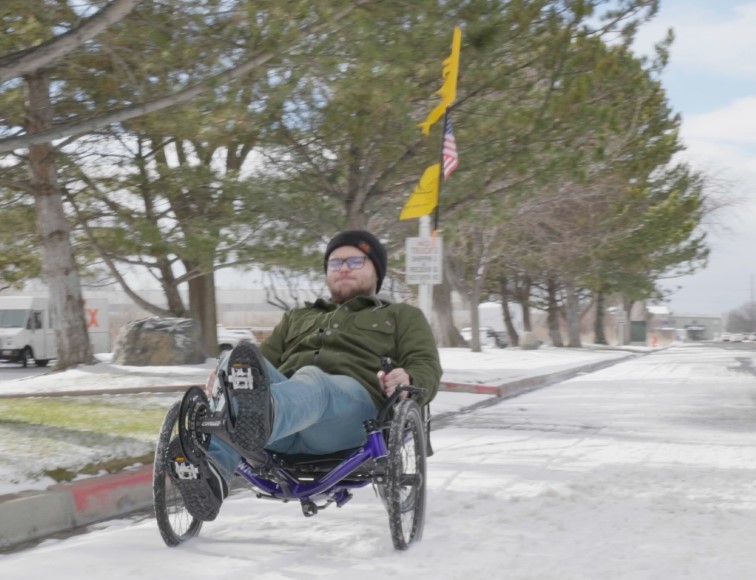
Getting Comfortable with Controlling Your Trike
Adjusting to how your trike handles may take some time. Make sure to practice in a controlled environment like an empty parking lot or quiet neighborhood streets before venturing out into areas with more traffic. Make it a point to get comfortable with the trike's steering systems—whether under-seat or over-seat steering—as their dynamics can vary significantly.
As you gain experience with your recumbent trike, experiment with different riding conditions such as uphill, downhill, and bumpy terrains. By doing so, you will gain valuable hands-on experience that enables you to better anticipate how the trike will respond in diverse scenarios.
Adapting to how your trike handles requires patience and time. Familiarizing yourself with these vehicles is part of the fun and adventure that awaits you in their world.
Steering Techniques for Recumbent Tricycles
As a recumbent trike rider, you'll find that the steering system plays a crucial role in maneuvering and fine-tuning your riding experience. Recumbent trikes usually employ two primary steering types—Over-Seat Steering (OSS) and Under-Seat Steering (USS)—each offering unique characteristics for handling your trike. In this section, we'll discuss the differences between these systems and provide tips to master them.
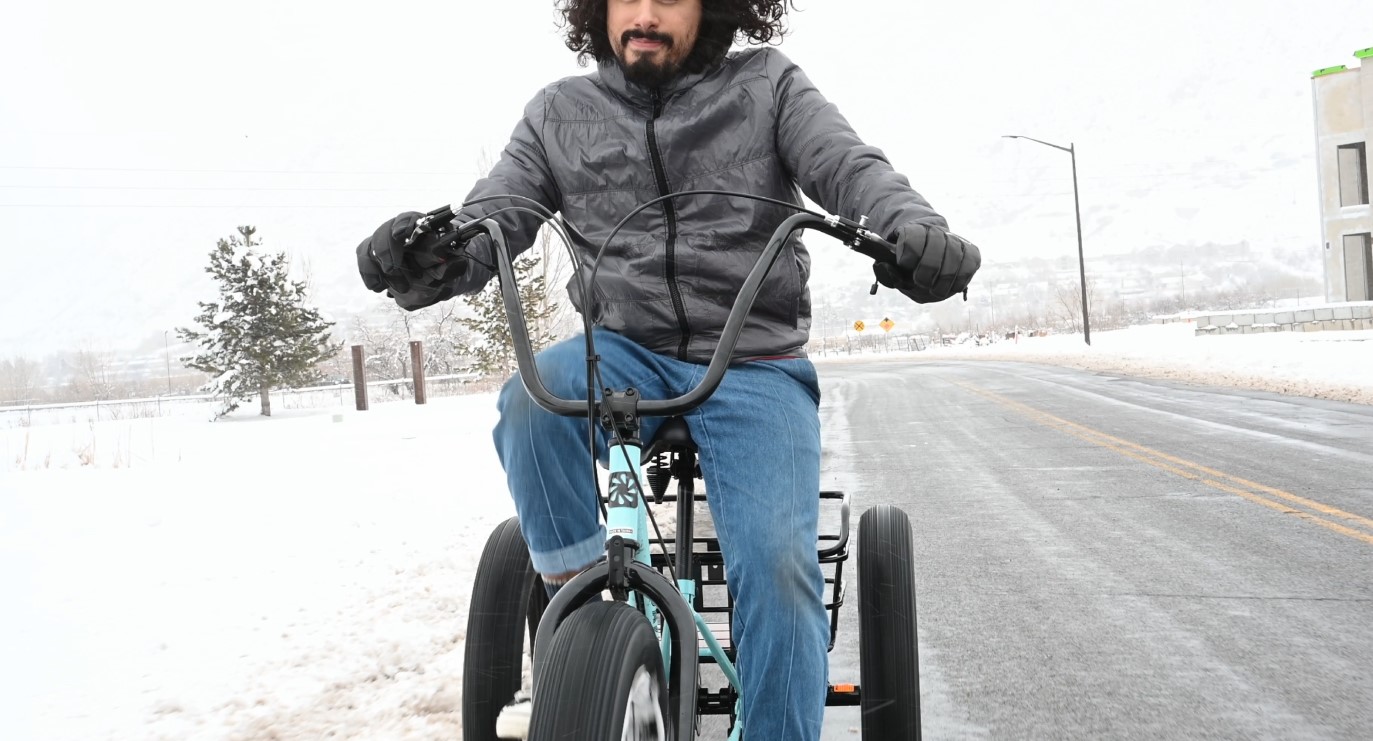
Over-Seat Steering (OSS)
OSS is characterized by the handlebars located above the seat, directly in the rider's field of view. This configuration offers a more familiar and intuitive approach to steering, resembling conventional bicycle handlebars. Here are a few tips for mastering over-seat steering
- Maintain a relaxed grip on the handlebars and avoid clenching them too tightly.
- Steer with smooth and gentle movements to prevent over-corrections and instability.
- Keep your elbows slightly bent for better control, comfort, and shock absorption.
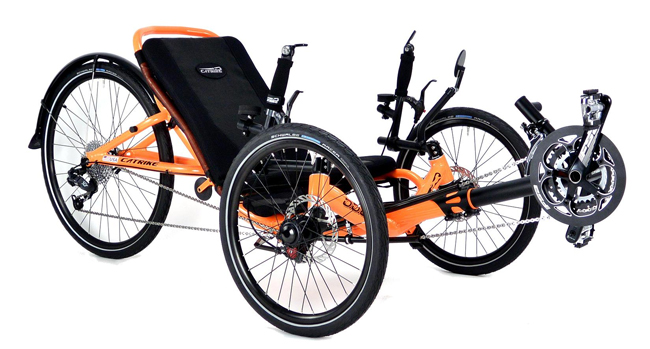
Under-Seat Steering (USS)
USS involves the handlebars being positioned beneath the seat, which can provide a more ergonomic and comfortable arm position for long rides. However, the unfamiliarity of USS can lead to a steeper learning curve for riders transitioning from conventional bicycles. Here are a few tips for mastering under-seat steering.
- Focus on maintaining a loose grip on the handlebars; let your hands rest against them rather than grasp tightly.
- Steer primarily with your wrists and avoid excessive arm movement.
- Experiment with small adjustments in speed and direction to familiarize yourself with how the trike responds to different inputs.
Practicing in Safe Environments
Once you've gotten used to the steering system of your trike, it's important to practice in a safe, low-traffic setting. This will allow you to hone your skills confidently without having to worry about unpredictable road situations. As you progress, gradually introduce new elements to your practice, such as changing terrains and busier roadways.
Becoming proficient in steering your recumbent tricycle will enhance your riding experience. By understanding and mastering OSS and USS steering depending on what's on your trike, you'll soon be maneuvering your trike with ease and confidence, unlocking the full potential of your recumbent adventure.
Maintaining Optimal Seating Posture
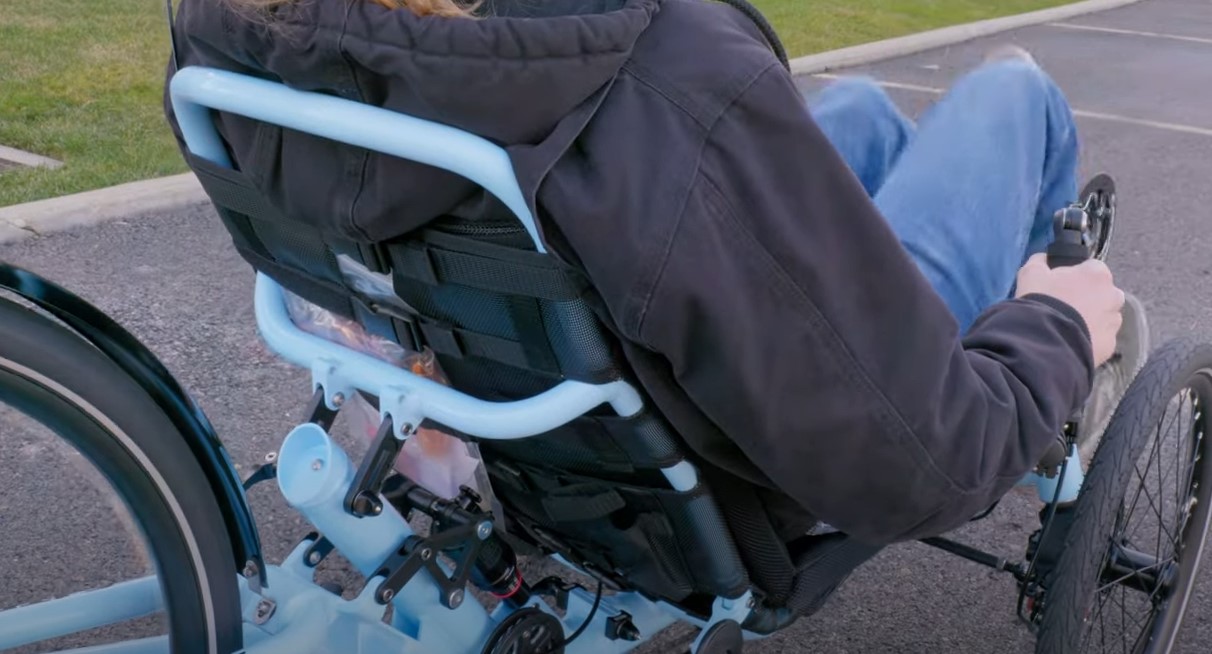
Another thing that sets trikes apart from bikes is their seating position. maintaining an optimal seating posture is an integral part of the recumbent riding experience. Proper seating not only maximizes comfort but also promotes efficient pedaling and reduces strain
Importance of Correct Posture
Unlike conventional bicycles, recumbent tricycles allow you to sit back comfortably, which can make for more enjoyable, longer rides. However, it's essential to ensure you are sitting correctly on your trike to avoid any long-term discomfort or injury. Here are a few reasons why.
- Reduced Strain: Correct posture can greatly contribute to reducing unnecessary strain, especially on your back, neck, and wrists, by evenly distributing your body weight across the seat.
- Improved Power Transfer: A well-adjusted seating position allows your legs to transfer power to the pedals more efficiently, enhancing your pedaling strength and endurance.
- Enhanced Comfort: By maintaining correct posture, you ensure your body is properly aligned, which significantly increases comfort during long rides.
Achieving the Optimal Seating Position
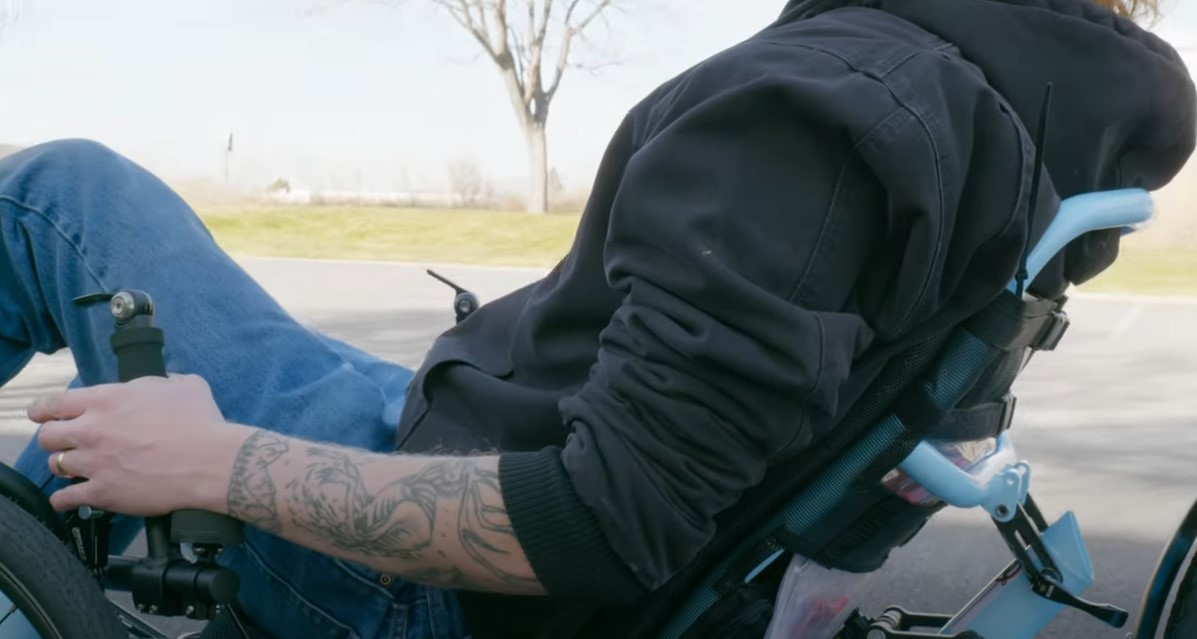
Understanding how to achieve the optimal seating position is vital. Here are some tips.
- Back Support: Ensure your back is fully in contact with the seat and keep it comfortably straight. The trike's backrest should provide support to your whole back, enhancing stability and comfort.
- Pedal Distance: Adjust your seat so that when your foot is on the farthest pedal, your leg is nearly fully extended, but not locked. This way, you can maintain efficient and comfortable pedaling.
- Arm Position: Your arms should comfortably reach your steering system, either OSS or USS, without much stretching. Keep your elbows slightly bent to absorb shock and for better control.
- Foot Rest: Make sure your feet are placed correctly on the pedals. Polished shoes may slip, so it's better to wear footwear with grip.
Making Necessary Adjustments
Personalizing your seating setup according to your comfort and body type is necessary. Don't shy away from adjusting the seat angle, pedal alignment, or handlebar position for your comfort. You can also add supportive accessories such as head rests, seat pads, or heel support pedals.
In a nutshell, correct seating posture is as important as mastering steering techniques or understanding a trike's handling. By ensuring comfort and correct alignment throughout your ride, you are not only promoting better health, but paving the way for a more enjoyable and efficient triking experience.
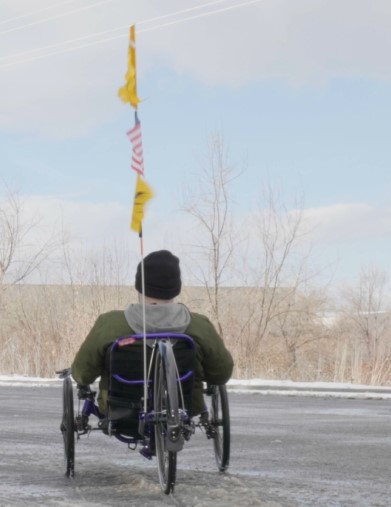
The Importance of Visibility on Your Trike
Our next aspect of recumbent trike riding that we want to bring to your attention is visibility. Due to how trikes are designed compared to bikes they sit lower to the ground, which can potentially make them less visible to motorists, pedestrians, and other riders. So, making sure you are easily seen by others sharing the road is very important for your safety. In this section, we will discuss ways to enhance visibility while on your trike.
Concerns with Visibility due to Lower Riding Position
While trikes being lower offers stability and them being recumbent allows you to relax while you ride, it also poses a visibility issue, particularly in heavy traffic, or when there are larger vehicles on the road.
Your lower stance may sometimes make you imperceptible in a car's blind spot or among tall vehicles.
Essential Visibility Aids for Recumbent Tricycles
Utah Trikes recommends employing the following visibility aids to ensure your safety while riding.
- Flags: Attaching a high-visibility flag to your trike is an easy and effective way to increase your presence on the road. A flag fluttering above your trike heightens your profile, helping to alert motorists of your presence in their vicinity.
- Lights: Lights play a vital role in improving visibility, particularly in low-light conditions or at night. Equipping your trike with a set of front and rear lights will make it highly noticeable. Flashing lights can be especially conspicuous, revealing your position to others on the road.
- Reflective Materials and Clothing: Reflective accessories and clothing can greatly enhance your visibility, ensuring high visibility when subjected to a light source. These can include high-vis vests, reflective tape on your trike, or even specialized cycling gear designed to increase visibility.
- Horn: While not directly tied to visibility, using a horn can alert others to your presence and enhance your safety on the road.
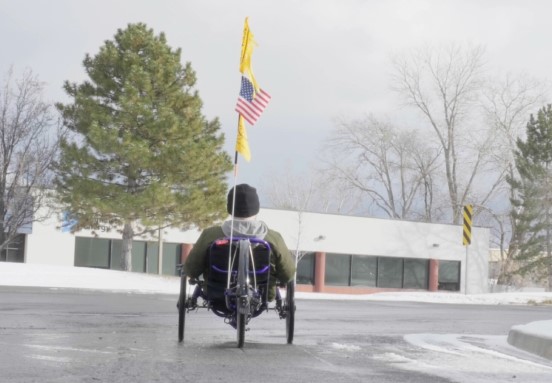
Choosing the Right Time and Place to Ride
Riding at peak traffic hours increases the risk of visibility issues. It may be safer to avoid heavy traffic hours whenever possible. Similarly, less crowded routes should take precedence over more occupied ones.
Communication and Defensive Riding
Lastly, maintain good communication with motorists and other cyclists. Use hand signals and eye contact to communicate your intentions. And always remember, even with all safety measures in place, assume you are not seen until eye contact or a definitive action assures you that you have been noticed.
All in all, riding a recumbent trike is different from a bike, especially in terms of visibility. By employing recommended visibility aids and practicing safe riding etiquette, you can navigate the roads securely and seamlessly. Safe riding begins with being seen, so make visibility a priority, and enjoy your recumbent riding to its full potential.
Online Resources
We here at Utah Trikes pride ourselves on being more than just a shop. We’re a hub of resources for recumbent trike enthusiasts. If you want even more tips and tricks on how to stay safe while riding our website has tons of guides and tutorials, including advice for beginner trike riders, advanced maintenance techniques, and helpful insights into the world of recumbent triking.
We also have an assortment of safety videos on our YouTube that are filled with plenty of tips and tricks to keep you safe when you’re riding your trike.
Happy Triking
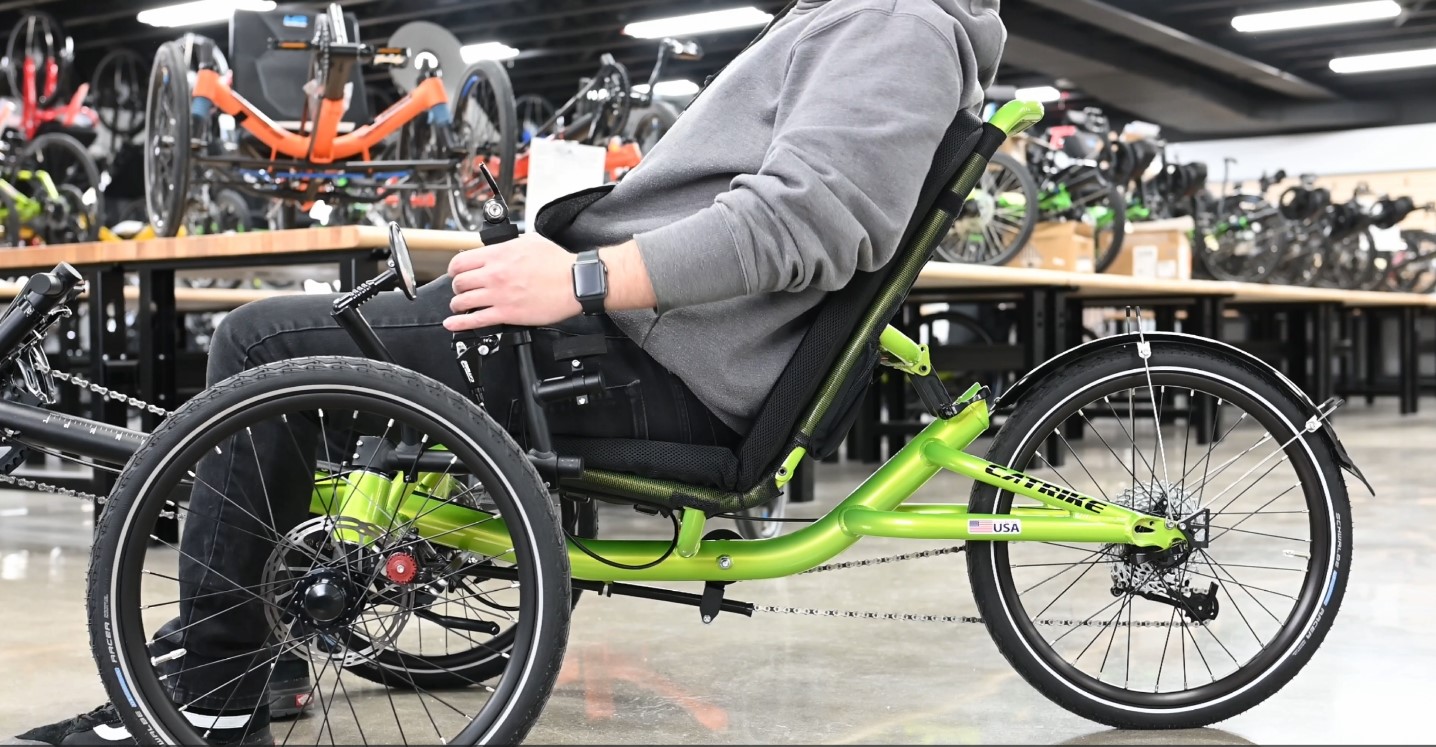
Whether you're a beginner or an experienced cyclist looking to transition to triking, there's a recumbent trike out there for you. With the wide array of models, custom configurations, as well as a range of accessories, the possibilities are endless. Despite the learning curve, remember that mastering a recumbent trike is as much a part of the adventure as the ride itself.
Thank you guys for reading another one of our articles. Make sure to comment down below what some of your favorite trike riding tips are and if you want to see more articles like this in the future. We’ll see you next time but in the meantime relax, spin fast, and ride trikes.




